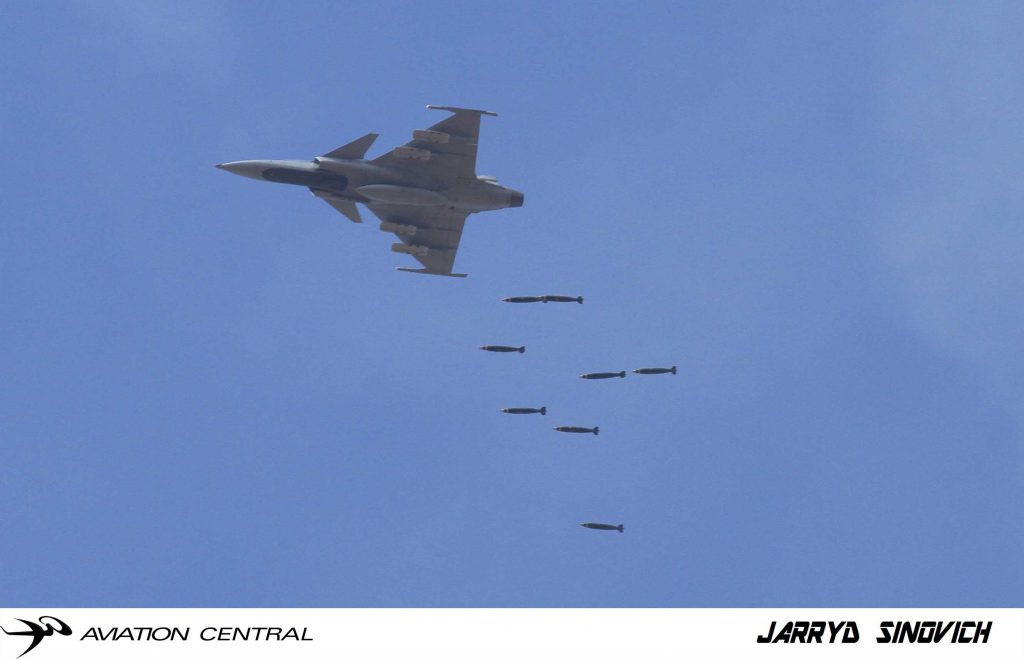Tag Archives: Agusta a109
Launch of Ultimate Heli-port Midrand
Ultimate HELI, a well respected operator that flies fixed wing aircraft and helicopters out of Grand Central Airport. Grand Central Airport which is just up the road from the heli- port, located near the Alan dale off ramp in Midrand.


Sunday the 9th December 2018 saw the official opening of the heli port with conjunction with National Airways Corporation (NAC).The gloomy Sunday morning saw invited guests and media being shown around the world class facility.

Agusta A109 Grand ZS-BAX (Photo by Vincent Nagel)
A number of helicopters visited the facility during the course of the day, while others have now taken up as residents at the heli port. Some of the helicopters that one could see was a number of Robinson R44s,Bell206 Jet Ranger, a Airbus H125, an Agusta A109,A119,Bell 430 and a Huey belonging to airshow performer Menno Parsons.



Photo by Camry De Lorme






Photo by Vincent Nagel 
Bell 430 (Photo by Vincent Nagel)
The heliport will have space for about 30 choppers and, since Ultimate HELI currently has 12 of its own, that leaves plenty of room for those that are corporately or privately owned. Roseveare knows that at least six or seven property owners within Waterfall own a helicopter, so they can now negotiate convenient storage space with the company.

Please click on Advertisement(s) below to help keep us going!
[quads id=3]
[quads id=3]
Official Opening of AAD 2018
Official Opening of AAD 2018
The Africa Aerospace and Defence (AAD) is Africa’s only aerospace and defence expo that combines both a trade exhibition and an air show. Held biennially in the City of Tshwane – South Africa’s administrative capital, the AAD Expo is one of South Africa’s largest contributors to the country’s GDP in show years, and is regarded as a national asset.

This show dates back to when DEXSA 1975 ,The Africa Aerospace and Defense (AAD) Expo was born from the Aerospace Africa civilian exhibition that originates from the 1975 Lanseria Air Show and the DEXSA military exhibition.
The first in the series of aviation exhibitions titled “Aviation Africa.”
The show was opened by a 21 gun salute and a flypast by three Agusta A109LUH,the president Cyril Ramaphosa then addressed the crowd with the following:

Agusta A109LUH flag flypast

Agusta A109LUHs

“South Africa views the role of the military in the modern context as a developmental force, both nationally and continentally”, this is the view from President Cyril Ramaphosa in his opening address of the 10th Africa Aerospace and Defence exhibition, taking place from 19 to 23 September at the Waterkloof air force base in Pretoria.

President Cyril Ramaphosa
According to the President, the show brings defence agencies and defence industries together in reflections on the evolution of security – and how they must each adapt to the requirements of the future.
“Improved security attracts investment, encourages growth and promotes development. In support of continental economic development, the SANDF forms part of the continental military intervention capability, in the form of regional intervention forces, as well as the centralised capability under direct control of the African Union. He argued that the South African National Defence Force ought to involve itself, with African partners, in peace missions to improve security in strife-torn regions. These intervention capabilities can reduce the risk of major interstate conflict and civil war.”
“From a national perspective, the development role of our defence force implies involvement in border safeguarding, adding that South Africa’s border safeguarding operation, Corona, also focuses on preventing the illegal exploitation of national resources.”
As far as internal security is concerned, the defence force must always be ready to provide additional capacity to maintain order and stability within the relevant governance framework.
“A defence force that is a developmental unlocks substantial peace dividends for states and effectively reduces the investment required in defence over time.”

Whilst the government continues to prioritise socio-economic objectives that provide the best possible future for the youth, he was adamant that the economy is under pressure pointedly saying the means available in the fiscus are finite.
The President acknowledged that the South African National Defence Force was adapting to this economic reality.In this regard, the SANDF was prioritising within the implementation of the Defence Review by focusing on the core roles of the defence force. He said several ideas were being explored to modernise the funding model of defence and reduce its dependency on the fiscus. Still, for both security and developmental reasons, South Africa was looking after its defence industry.
“It is a national asset that has value for many departments and agencies of government,” he said. “It innovates products for the greater economy, such as systems that improve the safety of railway lines or improve the efficiency of shark nets. The common TV decoder in widespread use in South Africa is based on the intellectual property from a military technology project.”
The President noted the industry’s role as an important employer and an incubator of scarce skills in science, technology, engineering and mathematics.
“Some of our aircraft-related businesses are expanding in a highly competitive environment as suppliers to the biggest players in the global aircraft industry.” The industry is a steady earner of foreign exchange by delivering to the world leading products such as the Husky vehicle for detecting explosives and improvised explosive devices.”

In support of the industry, he outlined the many initiatives to maximise the value of the defence industry, notably the Defence Industry Strategy developed by the National Defence Industry Council, a Defence Sector Charter developed to open space for private participation by small and medium black enterprises and a defence industry fund that was launched in June this year as a funding mechanism for industry.
Government intends to support the industry to become export-driven on the back of international investment, by having a policy stance favouring international joint ventures with local industry. He noted defence industry investment destination, South Africa combines many unique factors.
Local industry still tends to own the full supply chain necessary for conceptualising and manufacturing their end product. Unlike many international ventures, defence production in South Africa does not imply multinational interdependency.
In terms of intellectual property, South Africa is one of less than ten countries that can manufacture missiles of a certain level of sophistication. He used this as an example, saying the development of intellectual property into technology demonstrators is very cost-effective due to the exchange rate between the rand and the major international currencies.

President Cyril Ramaphosa, Minister of Defence and Military Veterans Nosiviwe Mapisa-Nqakula and General Solly Shoke Chief of the SANDF
“Many nations, from different parts of the world, have recently expressed interest in becoming involved in joint ventures with our industry. The African Aerospace and Defence exhibition offers a massive opportunity for all present to identify areas of synergy and convert them into joint ventures.”
The President concluded by saying that South Africa is interested in leveraging intellectual property into tangible products and export contracts. “We assume that the interest of our visitors here is a good return on investment and we are confident that it can be achieved.”
A flypast from nine PC7MKIIs from the Central Flying School concluded the ceremony.
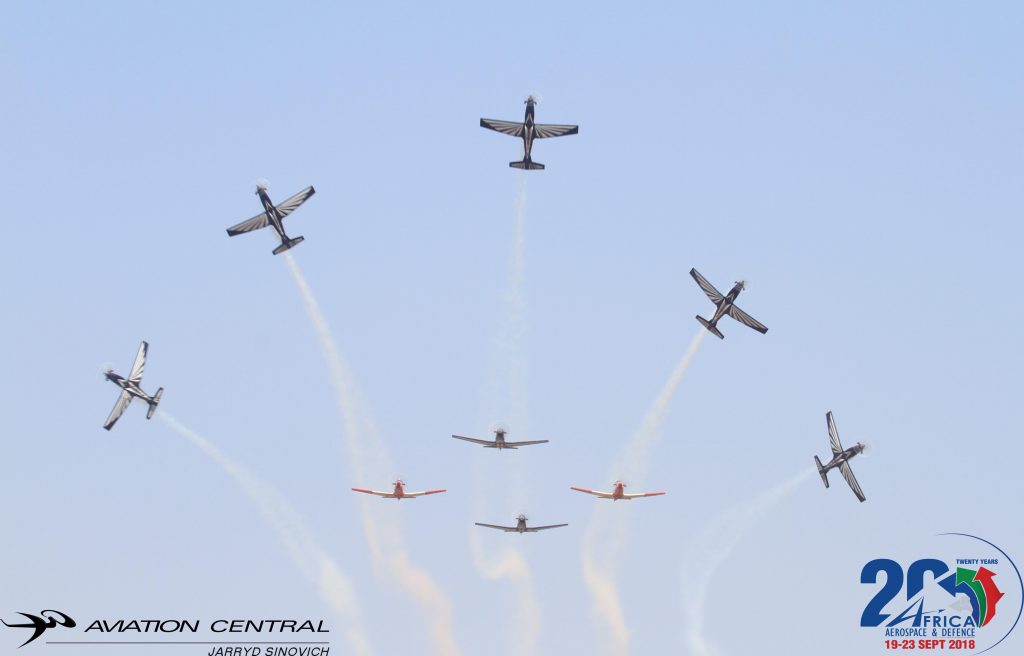
Nine PC7MKIIs from Central Flying School Langebaanweg




























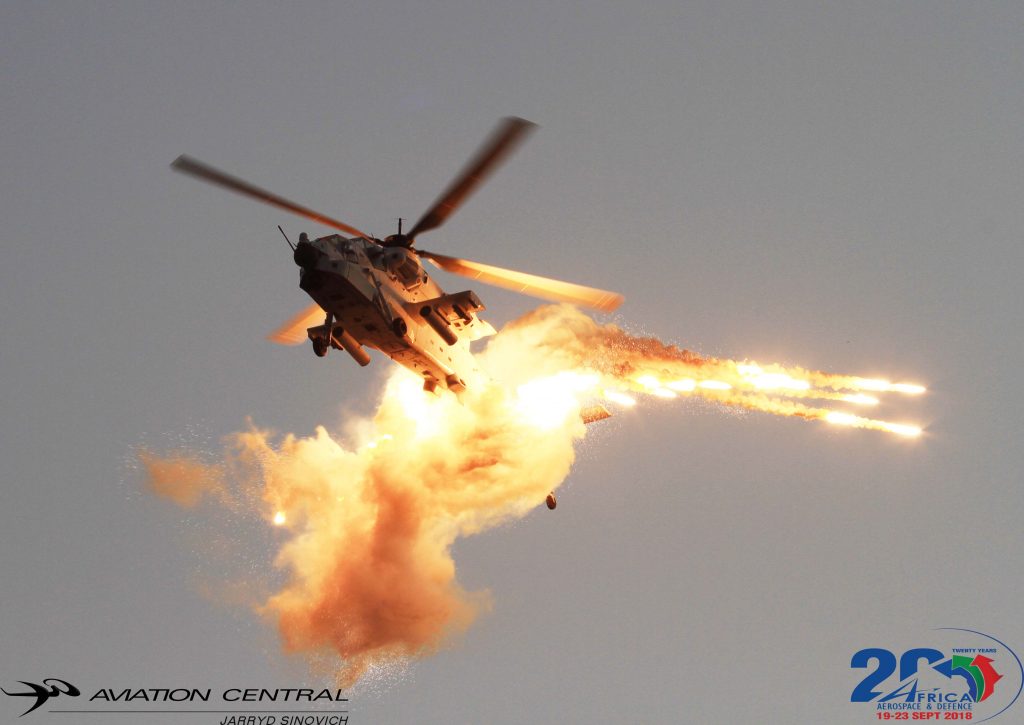







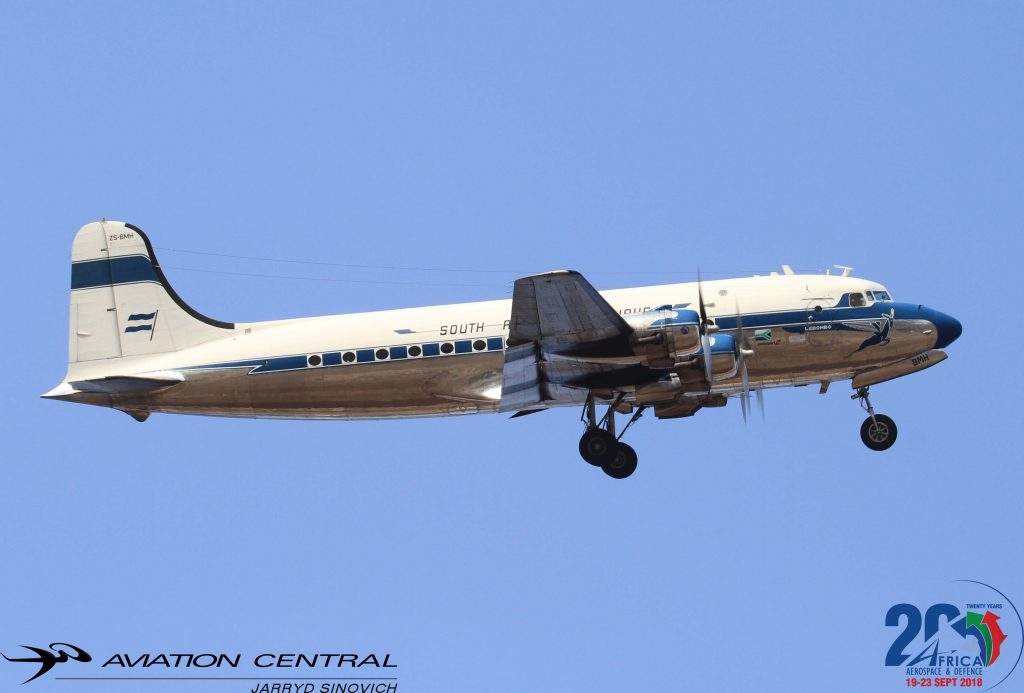
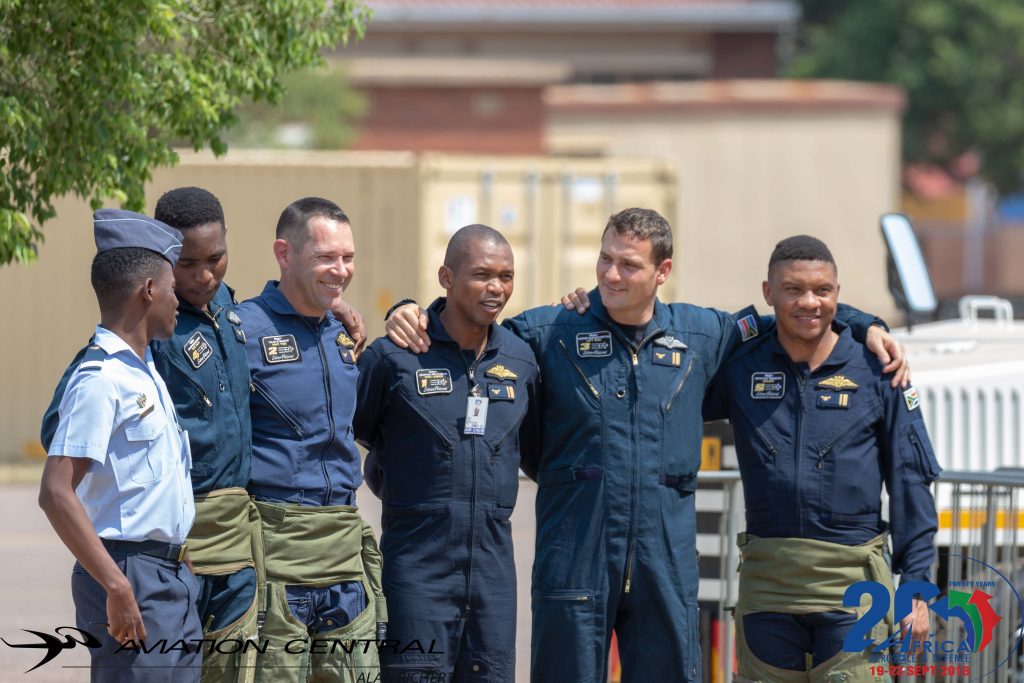





















































































































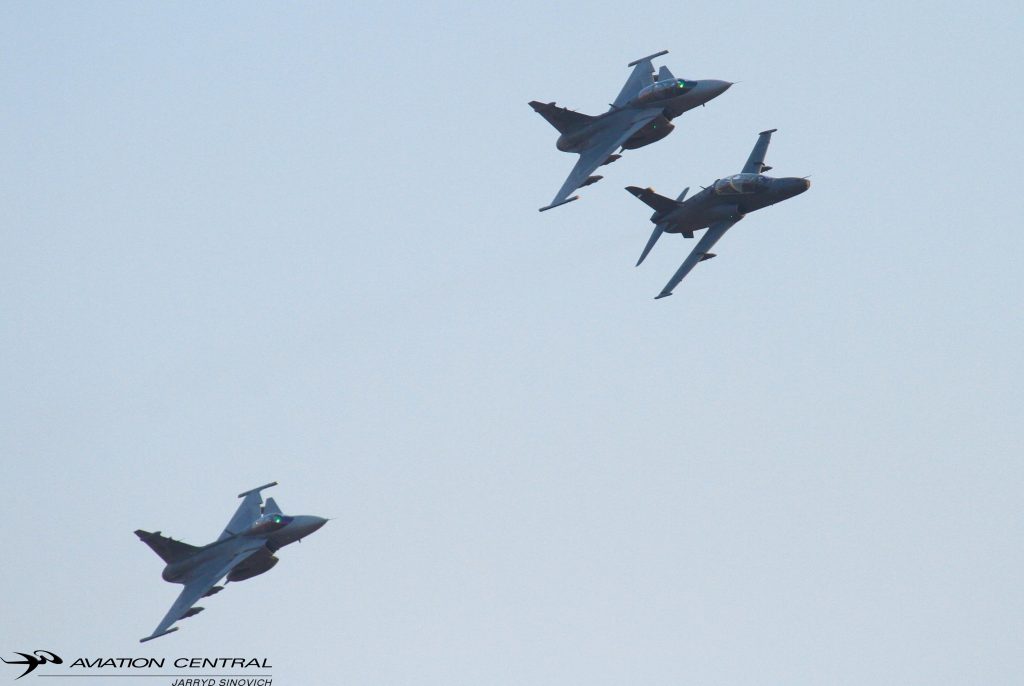

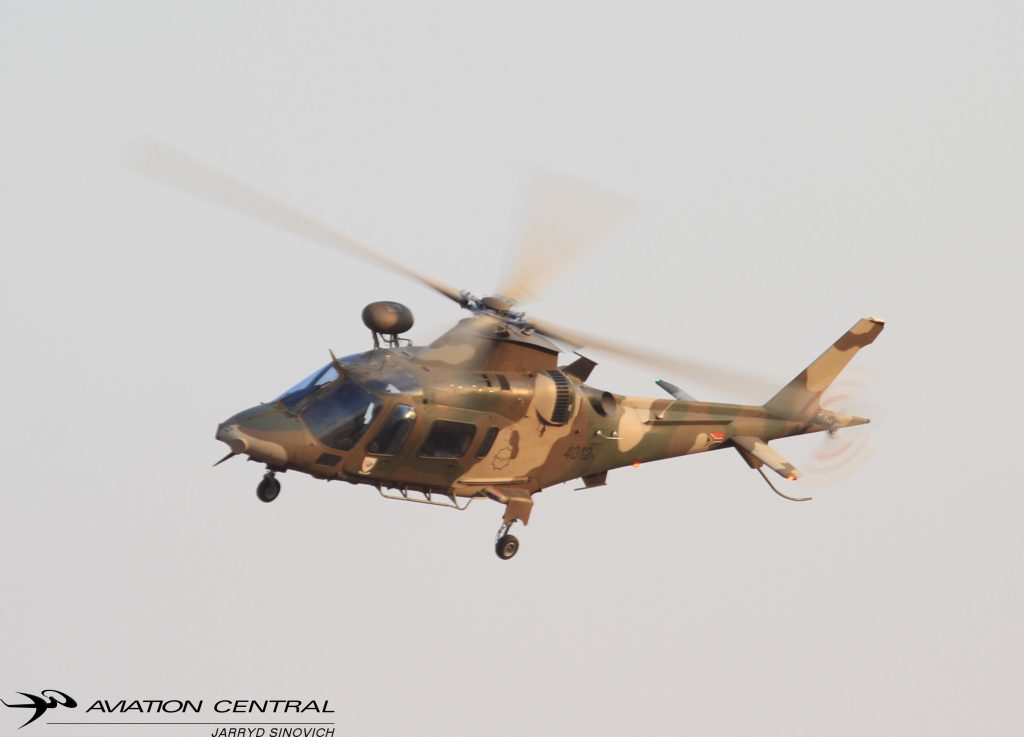

















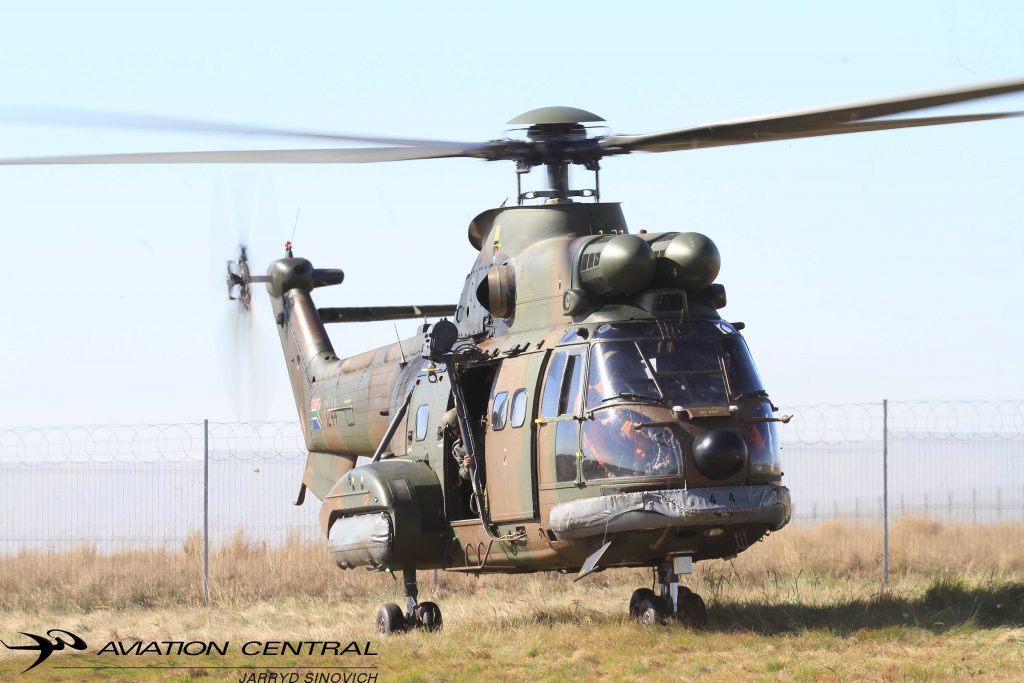








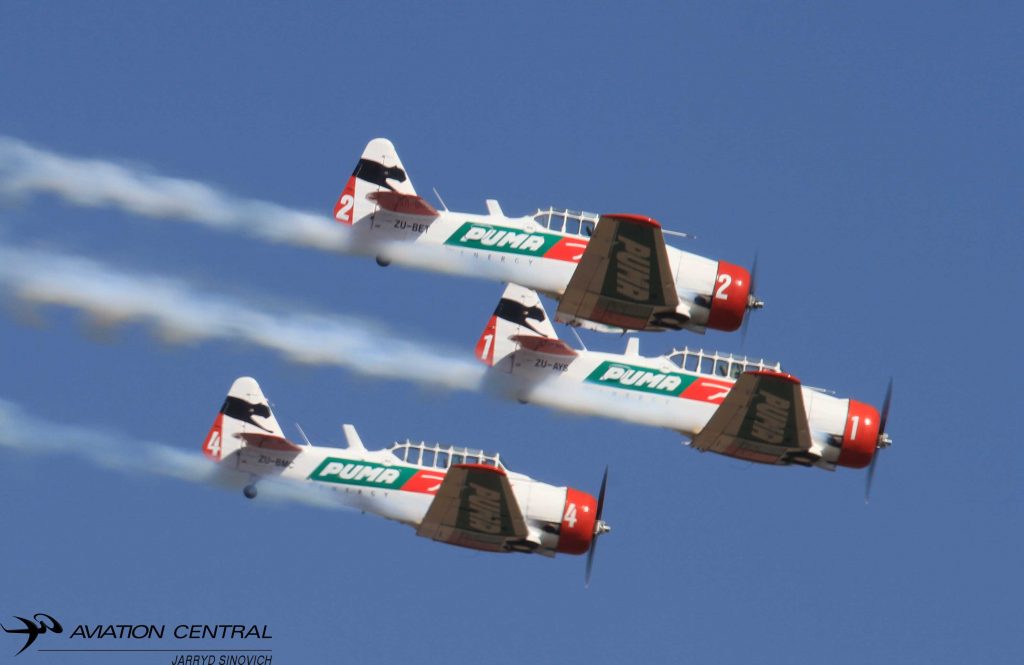





































































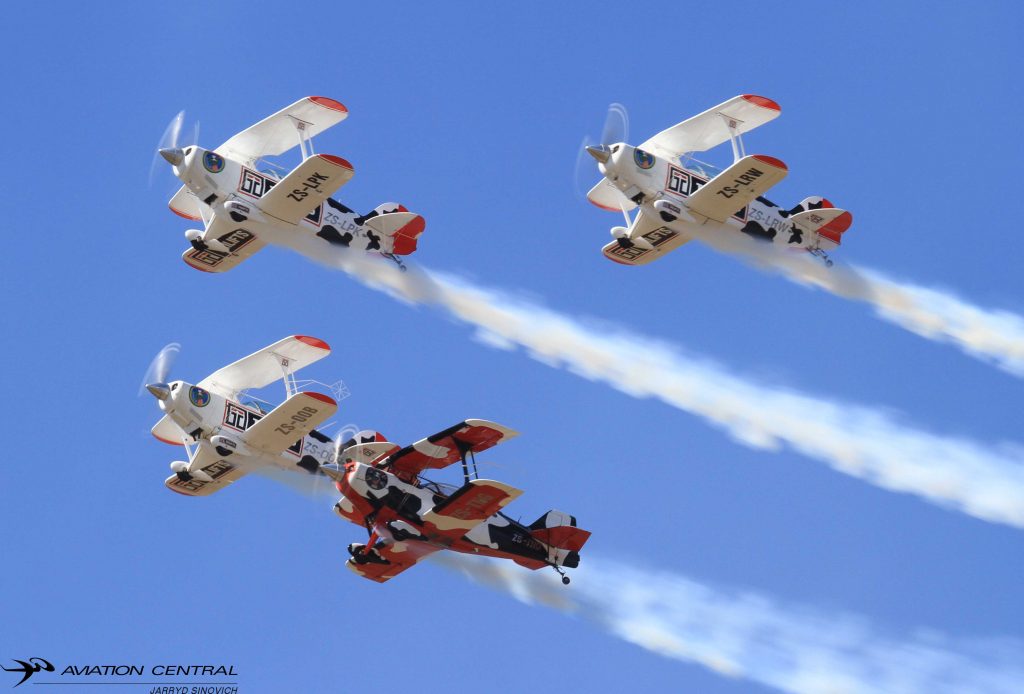





















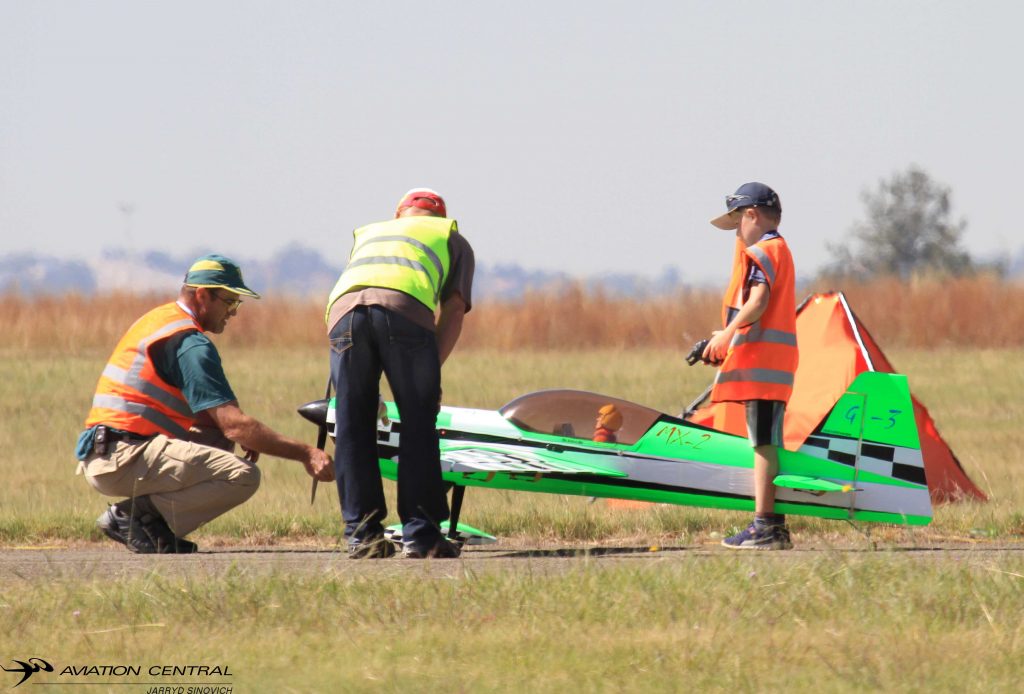
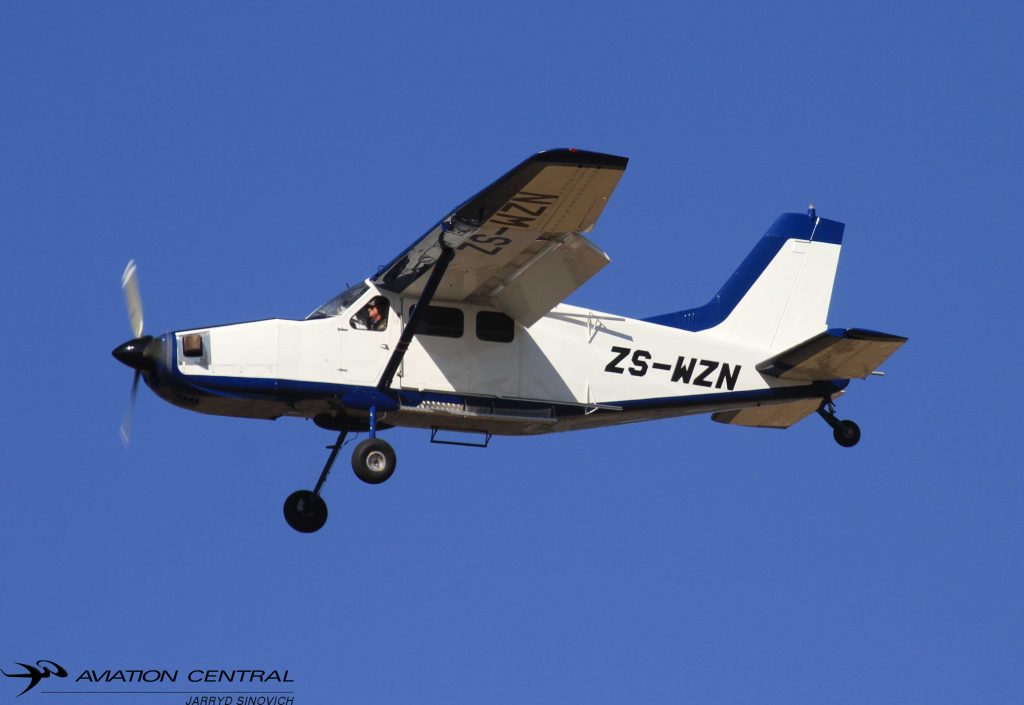


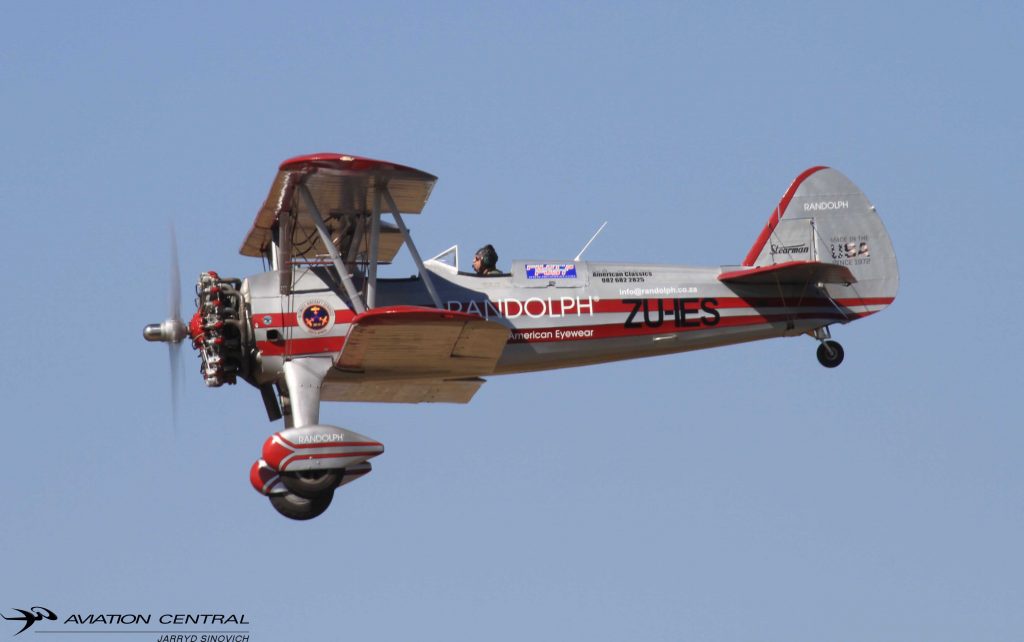


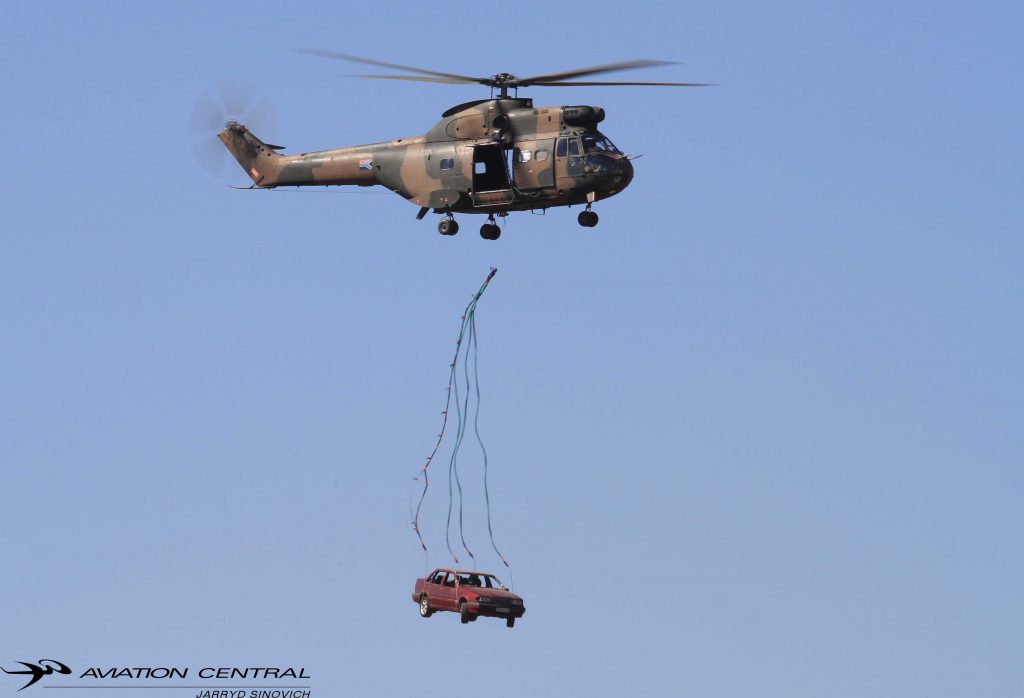











































































































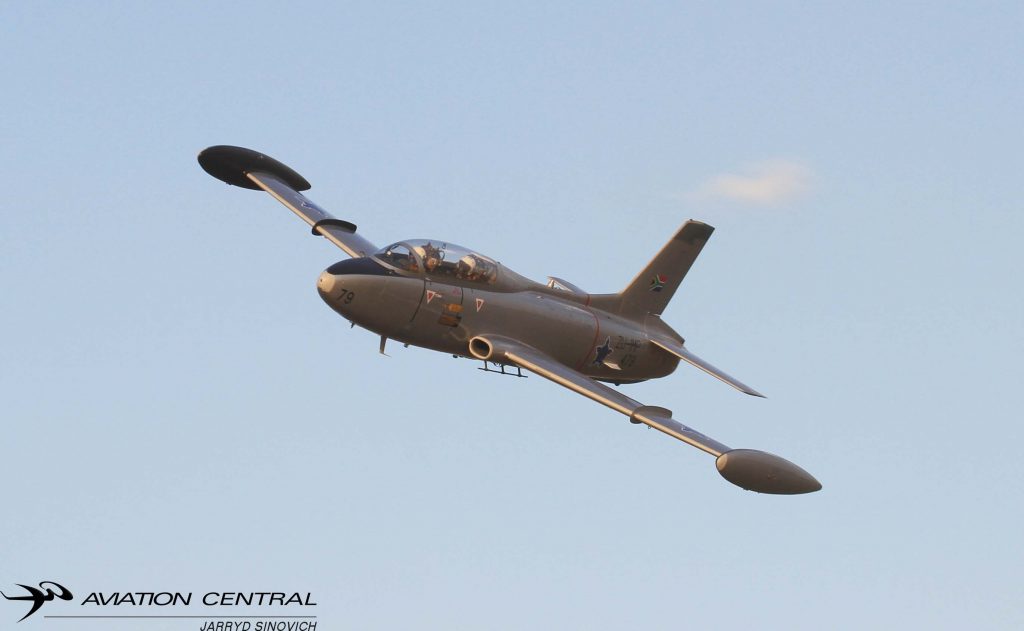












































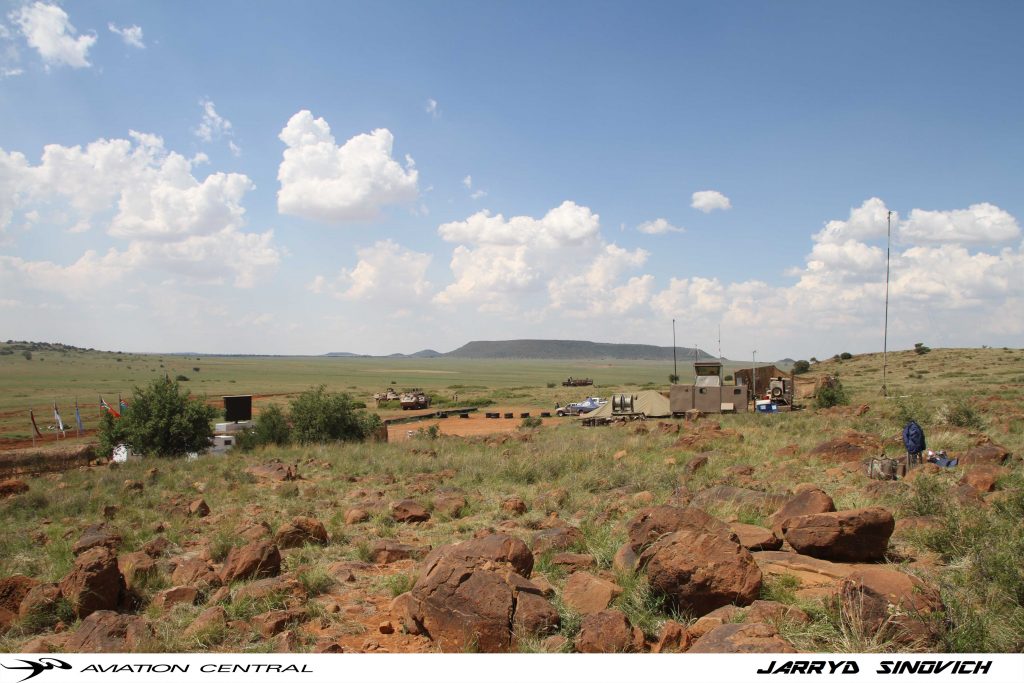





































 .
.


























